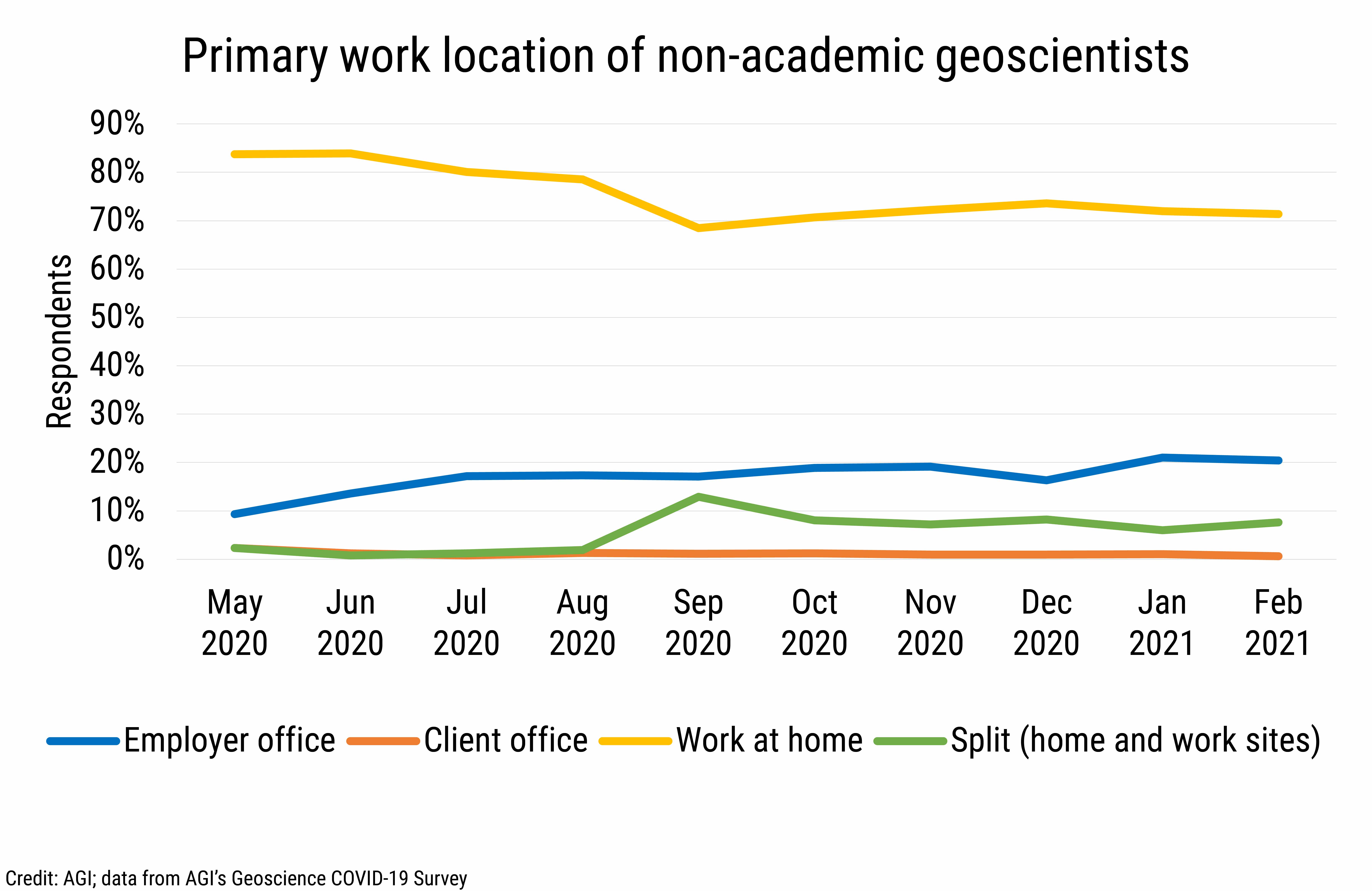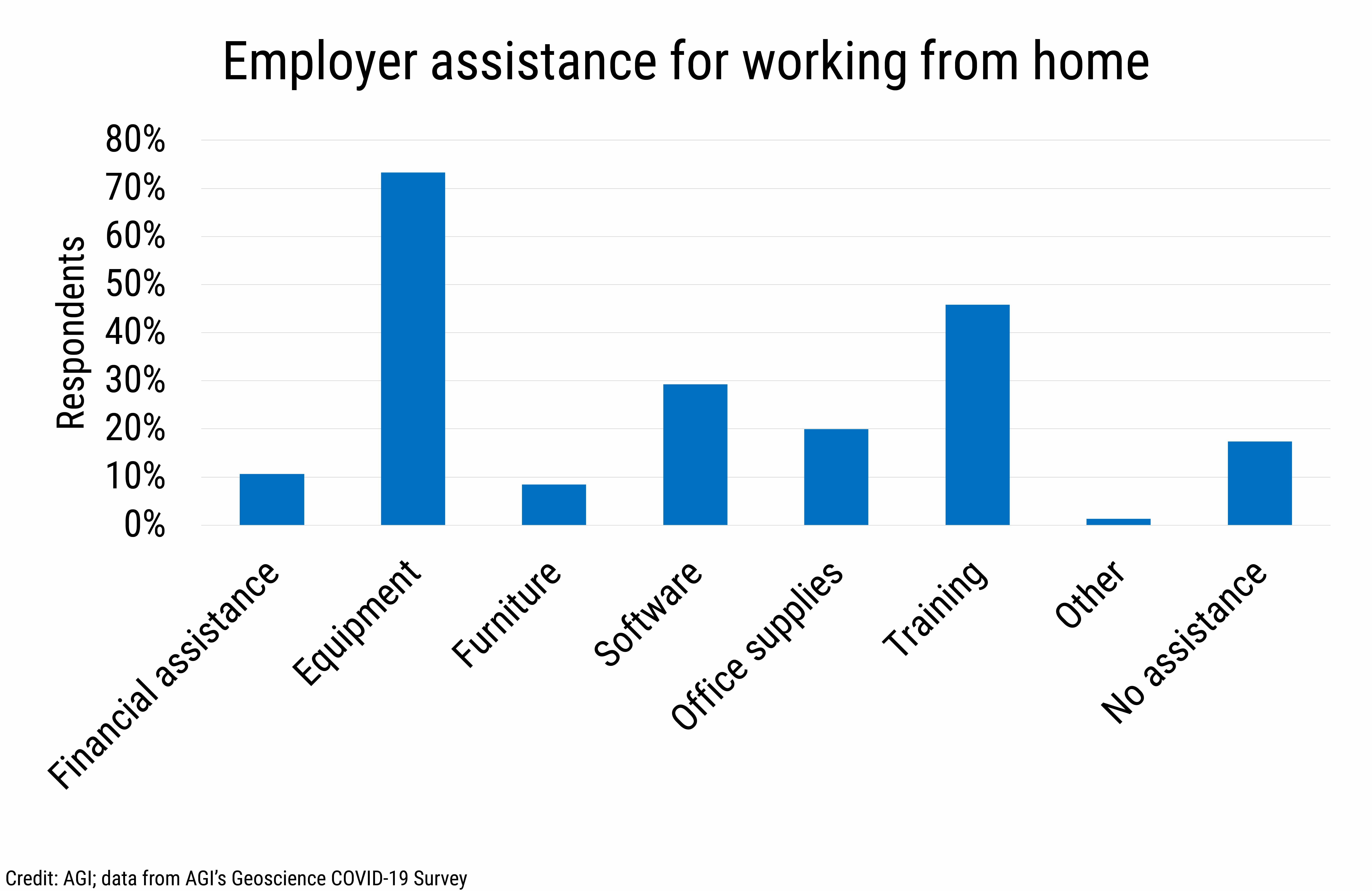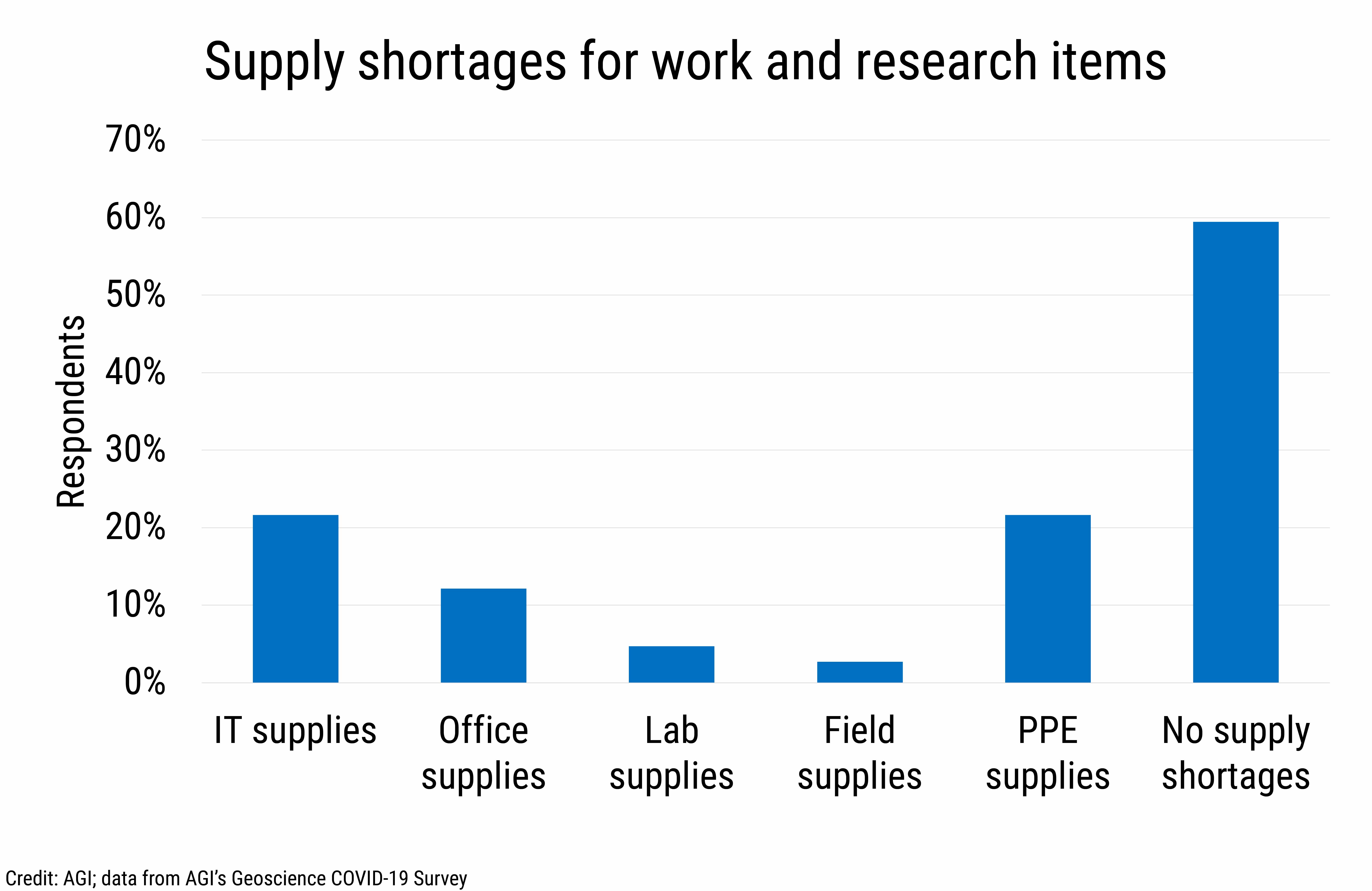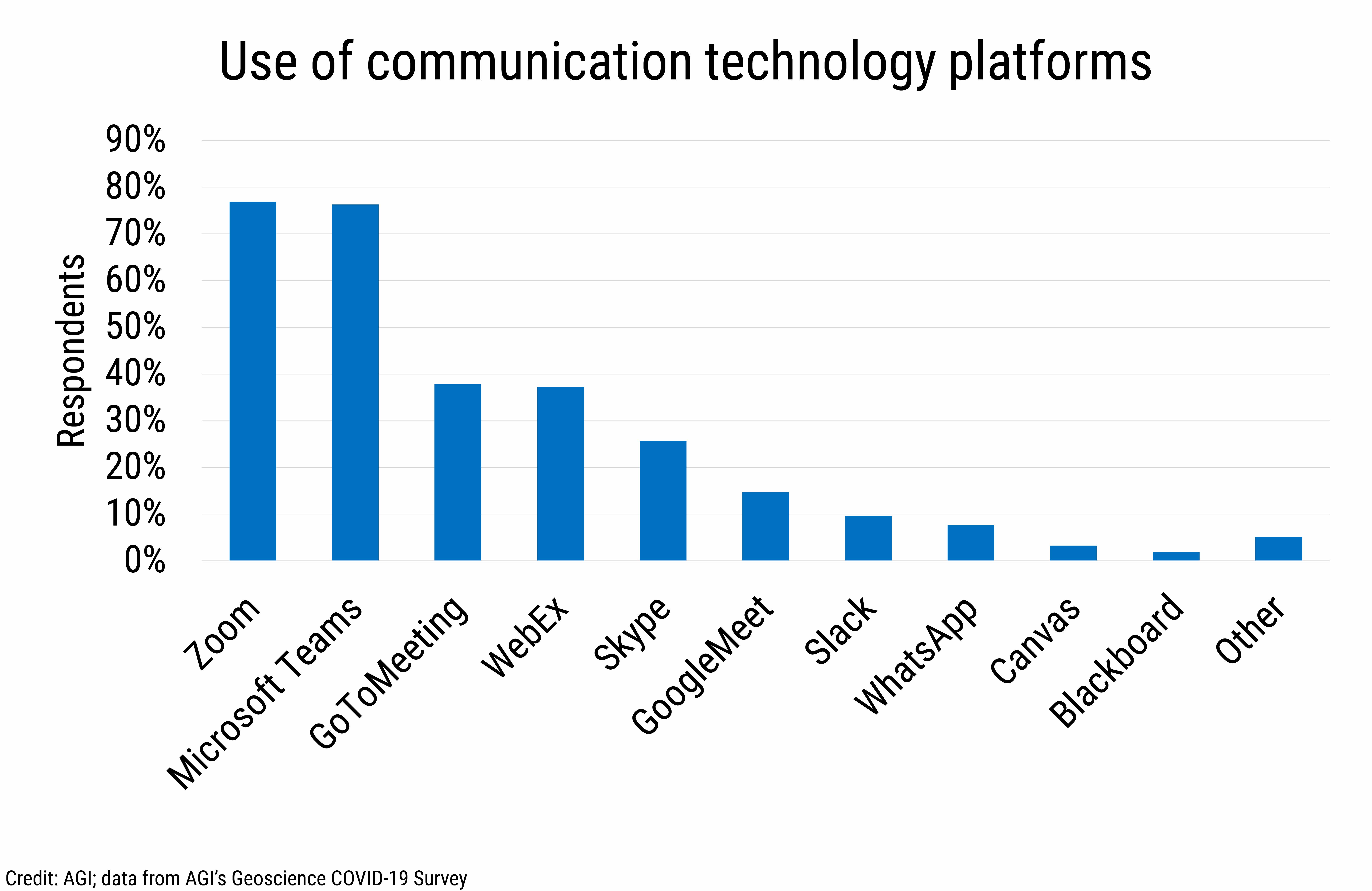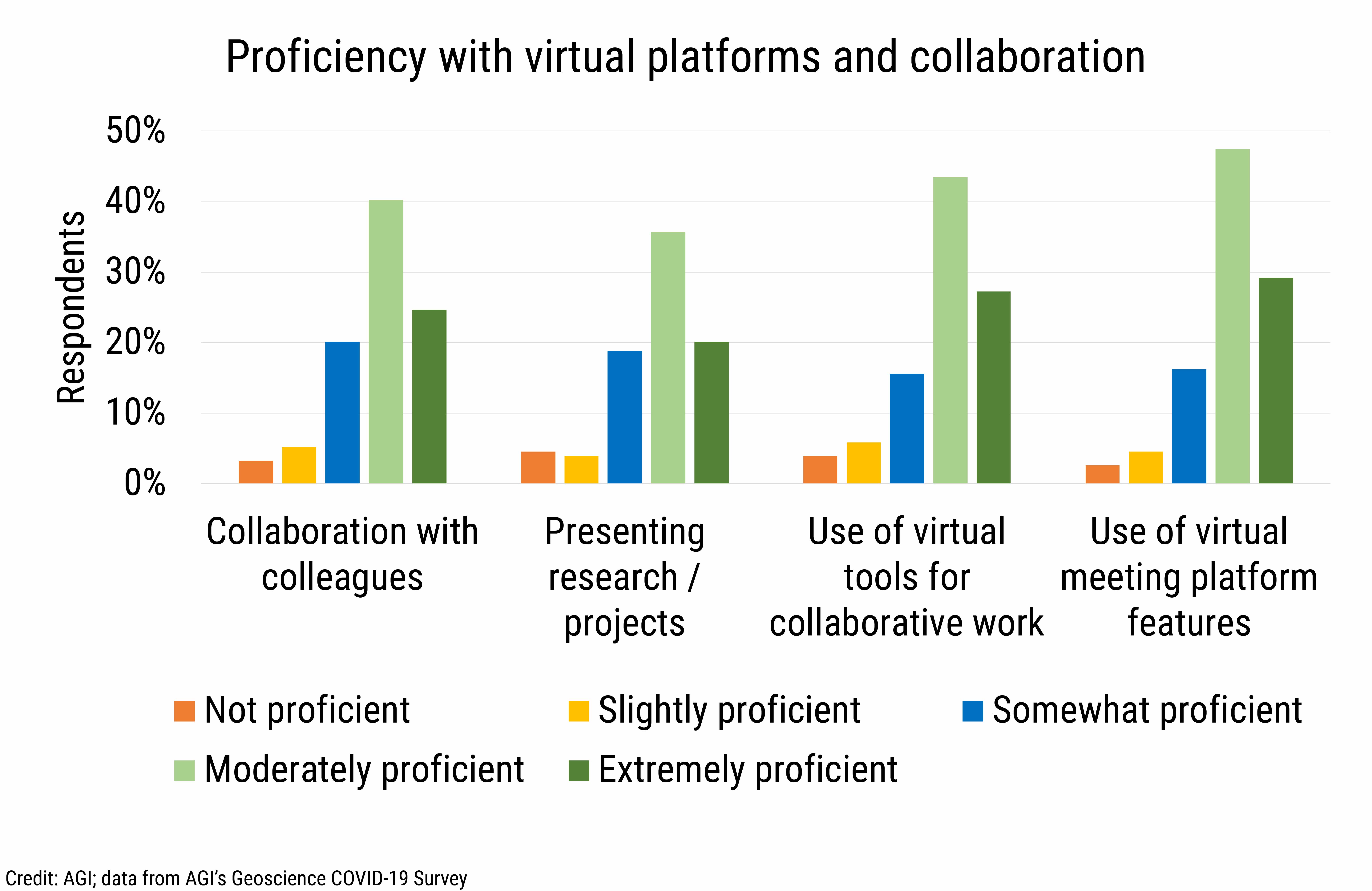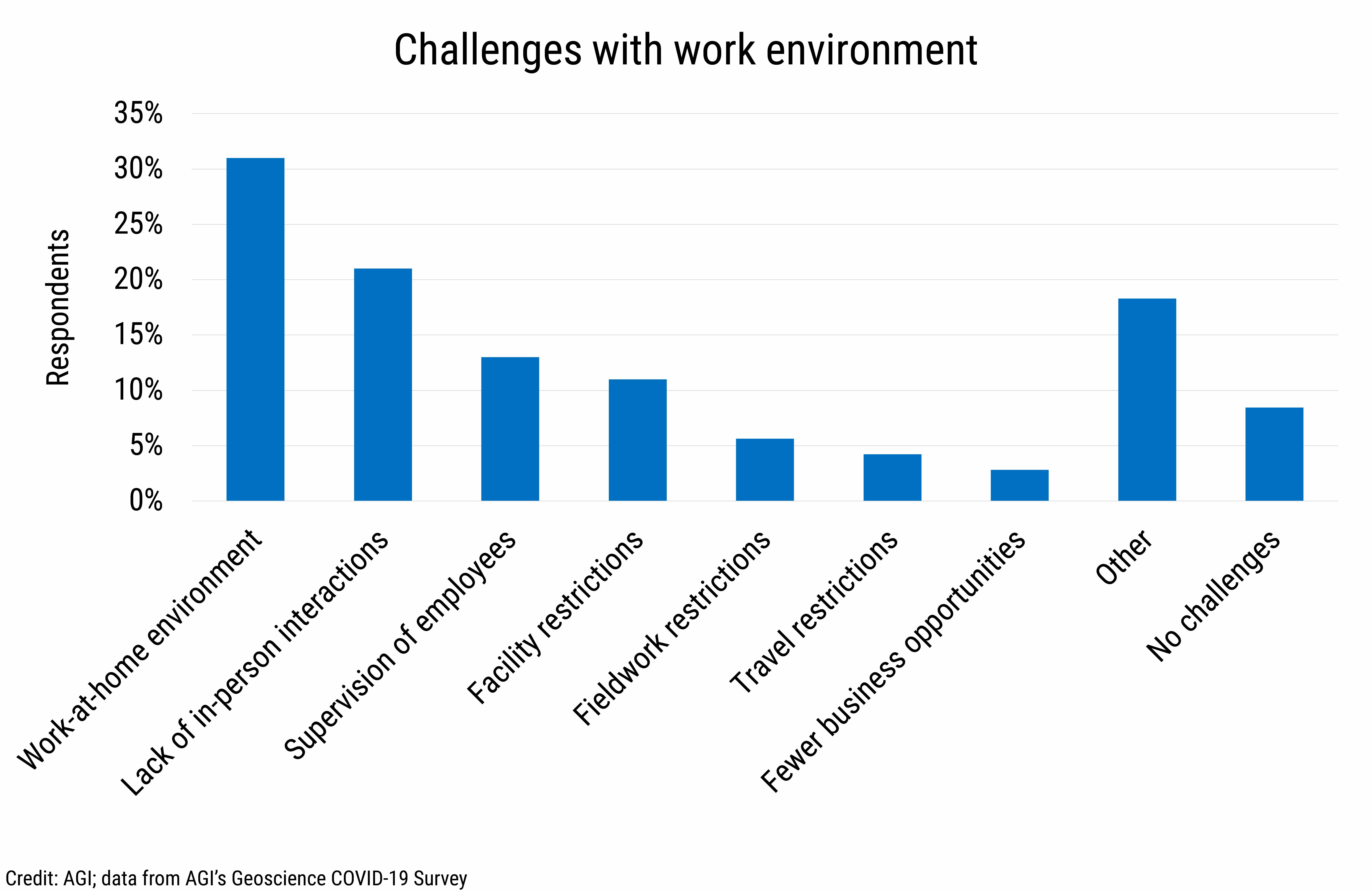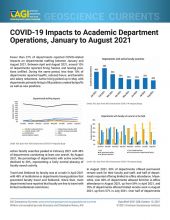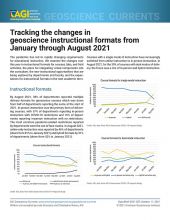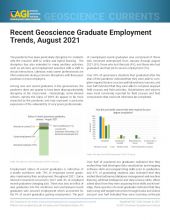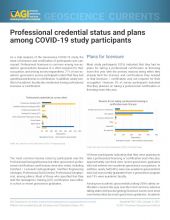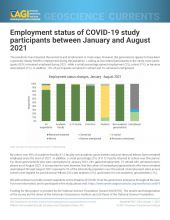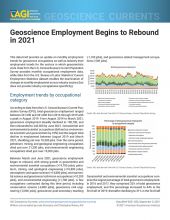In February 2020, the primary work locations of 89% of non-academic geoscientists was at their employer’s office, while 8% of respondents reported that their primary work location was working from home. By May 2020, primary work locations had switched, with 84% of respondents reporting working from home and 9% reporting working from their employer’s office as their primary work location. Starting in September 2020, respondents began to split time between working from home and other work sites (i.e., labs, field sites, client sites, employer’s office). Since September, the primary work locations of non-academic geoscientists have remained relatively steady with approximately 70% of respondents reporting work-at-home as their primary work location, just under 10% splitting time between home and work sites, and approximately 20% working at their employer’s office.
Eighty-one percent of non-academic geoscientists reported receiving assistance from their employers for their work-from-home environment. Assistance was primarily in the form of employers providing equipment, such as computers, monitors, printers, etc. to their employees. Eleven percent of respondents reported that their employers provided financial assistance to procure equipment, furniture, software and/ or supplies, and 17% of respondents reported receiving no assistance from their employers. Employer-provided training on software, equipment, etc. was reported by 46% of respondents.
Forty-one percent of respondents reported experiencing supply shortages during the pandemic for items needed for their work and research. Shortages were primarily in IT supplies (i.e., computers, headsets, webcams, external mics, printers, etc.) and personal protective equipment, such as face masks and cleaning supplies.
Zoom and Microsoft Teams were the most common communication technology platforms used by non-academic geoscientists. In addition, 81% of respondents reported using multiple platforms, with a higher percentage of respondents using Zoom and other platforms (74%) than those using Teams and other platforms (64%).
Over half of non-academic geoscientists reported being moderately to extremely proficient in all aspects of virtual platforms and virtual collaboration. Non-academic geoscientists reported that they were most proficient with using virtual meeting platform features and least proficient with presenting their research or projects in a virtual setting.
Nearly one-third of non-academic geoscientists reported challenges with how their home-based work environments were set up, with most comments focused on technology issues (lack of needed hardware, internet access, slow computers, lack of technical support etc.), distractions from others sharing the space, childcare and helping children with schoolwork, and maintaining a work-life balance. Just over one-fifth of respondents mentioned challenges with the lack of in-person and informal communication with colleagues, such as drop-in meetings, hallway discussions, etc., which has hampered relationship-building, collaboration, and creative brainstorming.
Respondents also commented on issues with supervising employees remotely especially with regards to not being able to keep track of what their employees were doing. Others mentioned issues with COVID-related restrictions that impeded facility access, travel, and fieldwork activities. Respondents also commented on the challenges in procuring new business contracts due to COVID-related restrictions. Other challenges mentioned by respondents included being required to work in the office, impacts to library research activities, challenges with colleagues who were not following COVID protocols, and online meeting fatigue. Only 6% of non-academic geoscientists reported no challenges with their current work environments.
We will continue to provide current snapshots on the impacts of COVID-19 on the geoscience enterprise throughout the year. For more information, and to participate in the study, please visit: www.americangeosciences.org/workforce/covid19
Funding for this project is provided by the National Science Foundation (Award #2029570). The results and interpretation of the survey are the views of the American Geosciences Institute and not those of the National Science Foundation.


